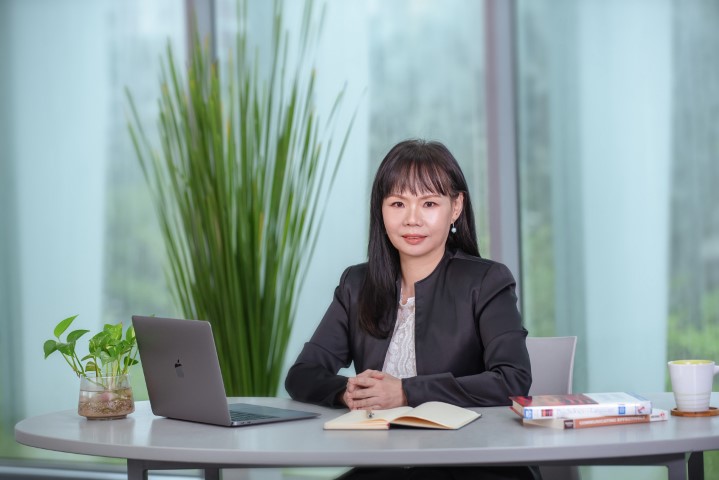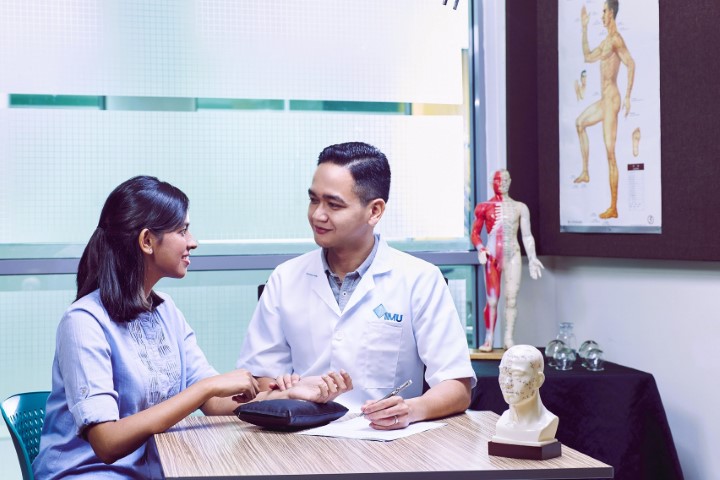This ancient tradition uses a completely different approach from Western medicine. If you are curious to learn what Traditional Chinese Medicine (TCM) can do for you, Dr Ong Siew Siew, Clinician-in-Charge and Senior Chinese Medicine practitioner at IMU Healthcare’s Chinese Medicine Centre shares some insights.
Many of us have friends who have tried Traditional Chinese Medicine before, with half of them singing their praises and the other half claiming that TCM is nothing more than people being gullible. Phrases like, “Why are you always having headaches? You should go and see my TCM guy, he’s very good!” or “Your immune system is not so good, TCM can help with that” are common, and so are dire warnings about TCM going wrong.
So where is the truth? Even though most of us have heard of it before, it is difficult to get a firm grasp of what this ancient practice involves, and whether it can support our health and wellness.

Dr Ong Siew Siew, Senior Lecturer at the Centre For Complementary & Alternative Medicine, IMU
To help, Dr Ong Siew Siew, Senior Lecturer at the Centre For Complementary & Alternative Medicine at International Medical University (IMU) and also the Clinician-in-Charge and Senior Chinese Medicine practitioner at IMU Healthcare’s Chinese Medicine Centre, offers some nifty tips and what should you know, for those who are considering TCM for the first time.
- Always look for a registered TCM practitioner
TCM stands for Traditional Chinese Medicine and it is a legitimate practice that is recognised in Malaysia by the Ministry of Health. Under the Traditional and Complementary Medicine (T&CM) Act 2016 [Act 775], the TCM industry is going through an important transition towards greater uniformity and credibility among the TCM practitioner community and the services they offer, which is great news for those seeking TCM advice.
From March 2024, all licensed TCM practitioners will be registered with the T&CM Council and issued an Annual Practising Certificate (APC). This will make it easy to verify the authenticity of a registered TCM Practitioner.
- TCM uses different principles from Western medicine
Based on TCM principles, every person has a unique body constitution pattern, signifying the intricate equilibrium of opposing elements and these elements must co-exist harmoniously for a person to be in good health, explained Dr Ong. TCM aims to restore this equilibrium and regulate the body’s dynamic energy, which can be influenced by various factors such as diet, stress, chronic illnesses, and more.
Based on these principles, TCM practitioners can help to manage many ailments. For example, TCM can help to relieve chronic pain, support the immune system, improve sleep quality, and much more. Some practitioners also specialise in certain areas of health such as the heart, lungs, digestion or the reproductive system.
“In TCM, our philosophy centres on achieving balance among various elements. Therefore, two patients with a similar ailment may receive different therapies because each of them presents a unique imbalance that requires rectification,” said Dr Ong.
As the treatment evolves and the patient’s constitution undergoes changes, the prescription and treatment may require modification. Therefore, it is highly advisable to maintain continuity of treatment with the same practitioner, who can closely monitor your progress.
This approach markedly differs from Western medicine, which typically focuses on diagnosing and treating specific diseases by targeting the affected organ or body part. However, it’s worth noting that TCM and conventional medication can go hand-in-hand, as long as both parties are well-informed. It’s essential to take any oral medications from the two disciplines at least four hours apart to minimize the risk of interactions. In contrast, for external modalities like acupuncture, cupping or moxibustion, the likelihood of interactions is minimal.
- There is nothing mystical or religious about TCM, so don’t worry!
Many people of different backgrounds seek help from TCM practitioners. For your first visit, it will be similar to any other medical appointment – the practitioner will take note of your medical history and perform some diagnostic techniques to check the body’s constitution.
It can be helpful to bring along medical records such as blood test results and any imagings like scans or X-rays to provide more background. You can also list out your medications and supplements, and discuss your daily routines and lifestyle. All this information will help the practitioner to understand more about you and your needs, so that an effective treatment plan can be formulated.
In this way, a TCM practitioner assesses a patient’s condition using TCM diagnostic principles and utilises a personalised combination of treatment methods. These are all grounded in scientific and non-spiritual principles to address any imbalances in the body. By and large, TCM employs four primary treatment methods: acupuncture, cupping therapy, moxibustion (burning of moxa herb or mugwort) and herbal prescriptions.
- Similar to Western medicine, the result of treatment with TCM will take time.
Treatment will vary according to the specific condition or ailment that needs to be addressed. Simple ailments may only need one or two sessions while those with chronic conditions would need more time. In addition, every person has a different constitution, lifestyle and habits.
As a result, even if a patient sees improvement in just one session, an existing pattern or situation in a person’s lifestyle may resume and cause the problem to recur, so it is normal for a practitioner to ask you to come back for a few sessions, explained Dr Ong.
At the end of the day, Dr Ong reminds that both TCM and Western medicine have different strengths and principles. In addition to seeing a certified practitioner at a registered clinic, she also advises patients to exercise proper judgement so that they feel comfortable and confident with the care they receive.
“Malaysia is currently undergoing a transition phase, shifting from self-regulation to statutory regulation, which includes regulatory-bound TCM education, training and medical record-keeping. This transition aims to enhance the code of professionalism and raise the standards of care in TCM, ultimately leading to improved patient safety and outcomes,” she said.
















